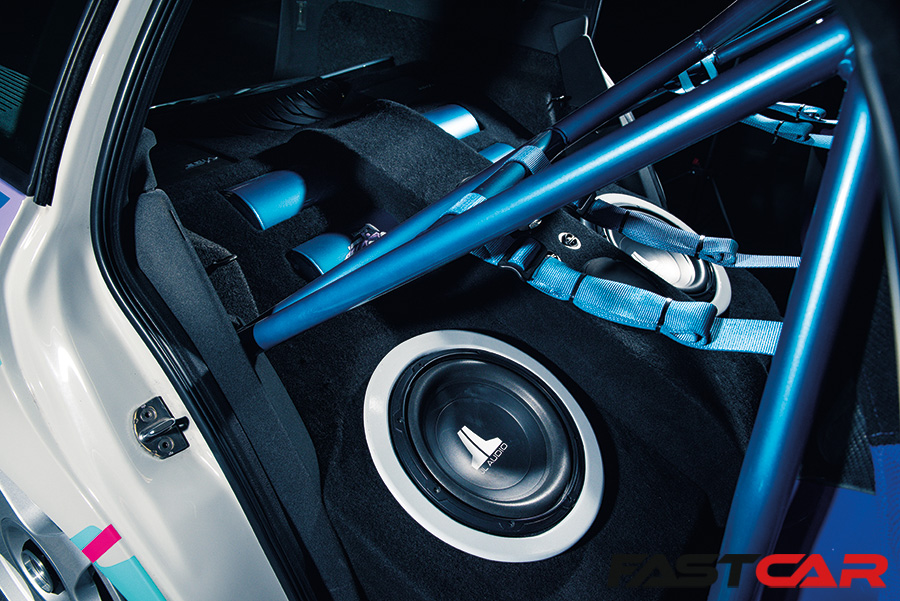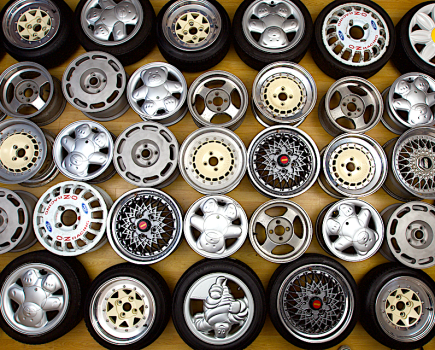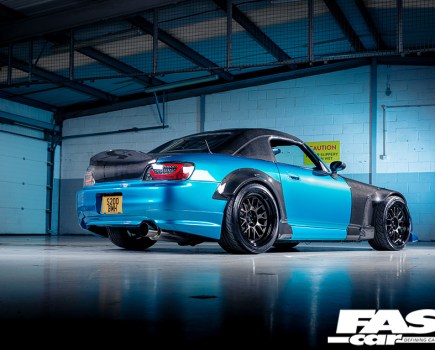OEM car speakers can be a little underwhelming, especially if you own an older car. We take a look at everything you need to know about the different types of car speakers before you decide to upgrade them.
You must start your journey into car speakers with some deep-rooted home truth – what do you want your music system to be for? Is it a simple wish to upgrade your car audio? Like going from OEM (Original Equipment from Manufacturer) factory car speakers to branded drop-in replacements? That is comparable to an engine re-map, an easy instant hike in what you wanted the car to do. Or do you want to make the best music you can, a version of your HiFi indoors, in the car? That can be like a full car resto-mod, meaning it can have no limit to how fancy that can get. Perhaps you are wanting something you can hear in your bones? Something to start a party within dozens of yards of your mad ride at events?
Our advice? Be honest with your end goal and admit it to yourself if you are an audio fanatic!
The basics of car speakers
To understand what speakers do, first you’ve got to understand the nature of sound. The sound waves the human ear can pick up are broken up into four sub-sections (below):
- Treble: Generally 5000Hz+
- Mid-range: 400-5000Hz
- Mid-bass: 100-400Hz
- Sub-bass: 20-100Hz
Different speakers are designed to reproduce specific parts of the audio spectrum. A tweeter will reproduce treble frequencies; a mid-driver will take care of the mid-range and, to some extent, mid bass; while a subwoofer is the only thing that will reproduce sub bass frequencies.
Your system needs to pump out every part of this range to get a true representation of your music. That’s why you need a whole host of speakers in your car. The real art is finding the right balance between them.
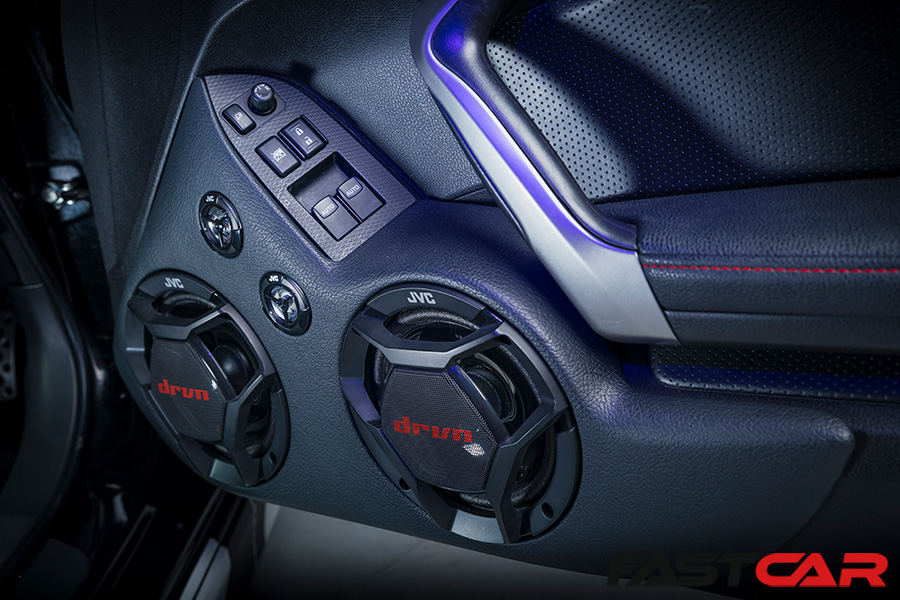
How do car speakers work?
Speakers are technically known as a moving coil driver which, in true Ronseal fashion, means it’s driven by an electromagnetic coil. The majority of speakers work in the same way. The voice coil is attached to the underside of the cone and it magnetizes when the signal is passed through it. When this happens it’s attracted to the magnet on the bottom of the driver. In turn, it pulls the cone down with it. When the signal quits so does the magnetic field and the suspension system makes the cone spring back. This pulsing cone generates the sound waves.
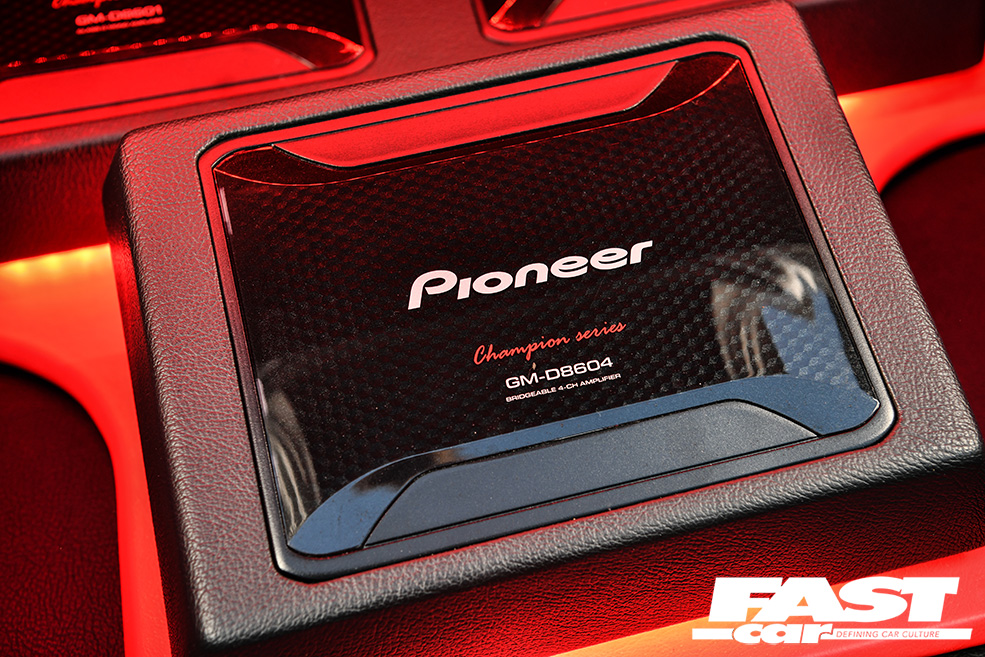
Amplification
Another aspect of how car speakers work is the amplifier. All car speakers need some sort of amplifier to work. Whether that’s the internal amp in your head unit or, for more serious applications, an aftermarket external amp.
It’s worth considering that a more powerful amplifier (with the gain turned down) on a lesser-rated speaker is a much better option than underpowering an expensive speaker. Aftermarket head units generally churn out a useable 50Watts per channel, but this might not be enough to balance out powerful subs so you may want to think about running a dedicated amplifier to all your speakers too. Remember the volume and sound quality can only be as good as your setup.
Check out our guide to car amplifiers for more advice.
Power handling on car speakers
Just because it says 300Watts on the box doesn’t mean you can whack them in your doors and you’ll get 300Watts flowing though them. How car speakers work mean they can’t produce their own power for a start, so it’s all down to the source.
These peak power figures have little to do with how loud the speaker will go, or how good it will sound. The build quality, correct installation and how good the amplification is are the elements that need to be perfected.
For matching up car speakers and amplifiers, the best figure to check out is the continuous power (RMS). This should give you a much better indication of how much the speaker can handle.
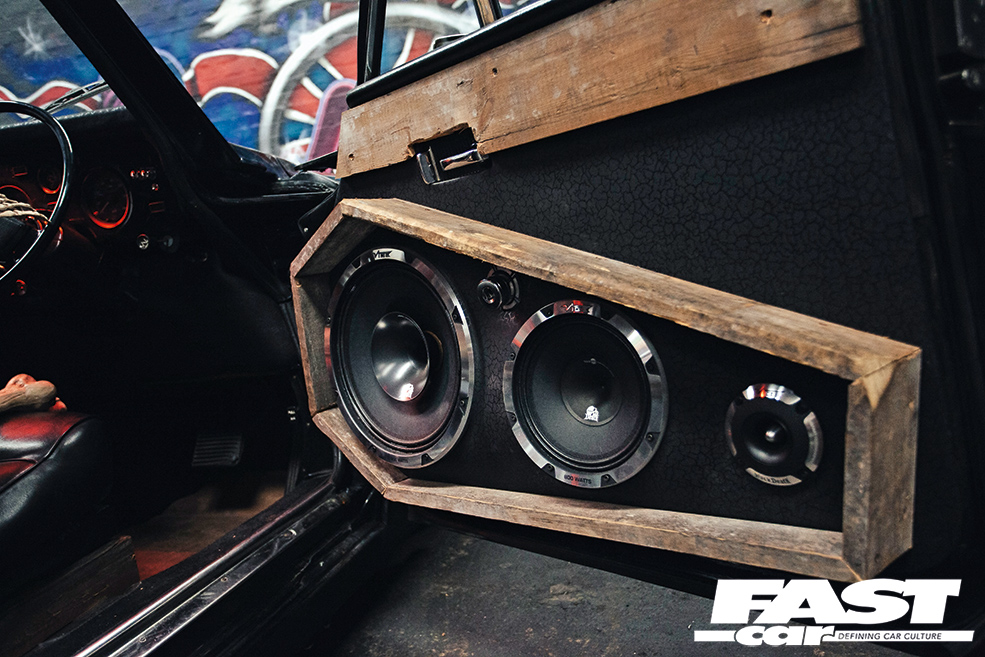
Sizes of car speakers
The tweeter size is pretty much irrelevant here. It’s nearly always the size of the mid driver that you’ll be looking at. Most commonly, sizes for both types of speaker come in at either 4.5in or 6.5in and that’s pretty handy because it’s the most common sizes of OE units too.
Again, what you want depends on where you put them. For the famous, oval 6x9in speakers things are a little different. These are specifically designed with large mid driver cones to produce more mid-bass than smaller speakers and are commonly mounted in a strong rear shelf rather than the standard speaker holes.
Full range car speakers
The most common type of aftermarket speaker you’ll find is the humble full range unit. They’re called this because they incorporate both a tweeter (or multiple tweeters) and a mid-driver all in one. These are generally the cheapest and easiest to fit, especially in a basic system where you’ll probably use the standard mounting points. They come in a number of setups commonly coaxial (two-way) which have two drivers (mid and tweeter) and tri-axles which usually have two tweeters mounted over the mid.
Speaker components
If you’re planning to spend a few quid and are after optimum performance look no further than component speakers. The weapon of choice for any serious install, the mids and tweeters aren’t all in one unit but work independently, giving greater flexibility for where you mount them. These usually incorporate either an internal or external passive crossover system. This is basically a little box of electronic wizardry that splits the signal into high (treble) and low (mid-bass/range) frequencies and sends it on to the relevant driver.
Adaptors
You won’t always need ’em, but if you want to make the fitting job easier than falling off a soap-covered log, buy speaker adaptors.
These are specific to each car model and enable you to fit a specific size aftermarket unit even if the original speakers are a weird shape. It’s all pretty handy if you are a novice installer, especially if you don’t fancy drilling a load of holes in your fresh motor.
Drop-in speaker replacements
Here’s where speaker upgrading for your car begins. Standard speaker sizes are described by their cone width, traditionally in inches, more often these days in millimeters. Yet while there are standard diameters for speakers, there is a huge variation in their behinds. Properly called the ‘motor assembly’, some are tiny little snug things and some are frankly more Kim Kardashian. This is all about the power they can handle in watts and how well they use those watts.
Before drop-in-replacements, there was always a wide range of speakers, going from very efficient to very powerful. One of the biggest Japanese manufacturers commissioned a mighty yearbook to tell you what speakers fitted which cars. This meant epic amounts of homework to research every car’s speaker location’s mounting depth – the limiter of speaker size. It was so good that dealers and installers used this bible to sell every other brand of speakers. All speakers came with accurate size dimensions.
The dealer’s job was to know what speakers fitted where, along with a possible upgrade path to offer. Many of them worked out packages that were ideal for certain cars.
Before long, the manufacturers got wind of this. They realized that if they too made vehicle-model specific sets, they would fly. Their difference was cunning mounting mouldings. These enabled a fitter to simply disconnect one speaker set, dropping in a new one.
The key was efficiency. Just like ‘how many horsepower per liter’, some speakers are better than others at making music from watts. Measured at a meter away, they see how loud a speaker goes with just one watt. The louder for one watt, the more efficient.
While high efficiency can mean lower power handling, your new drop-in replacements will simply play louder and clearer and better on your stock system’s watts.

Coaxial & convertible car speakers
The next set of products up from simple car-specific sets of drop-in replacements is to look at the co-axial speaker. In your car-model-specific drop-in set, you may have had a mixture of types, that you didn’t need to worry about. You just fitted the stuff where it belonged. Coaxials are where choice and taste can really kick in though, as you are looking at ‘proper’ car speakers.
Co-axial’ means having a co-incident axis. In this case, the high frequency speaker (or tweeter – see below) is mounted in front of the mid-and-lows frequency speaker. They both play their sound forwards at the same time as each other. Because they are coming from the same place, acoustically, we hear it as one sound.
Coaxials come in a wide choice of size and quality. They go from ‘just-fill-the-hole-for-the-least-possible’ to truly esoteric audio. Some, just to confuse things, are high enough quality with clever engineering, to be able to be deconstructed. The tweeter can be demounted and a ‘phase plug’ bullet-shaped dome screwed into its place.
The tweeter, if removable, can be mounted very close by, if not directly in front of the mid-lows speaker. You will still hear it as one full-music sound. If you mount it too far away, though, the sound breaks up into twiddle-and thud! So using convertible speakers in component mode takes a little knowledge.
The big selection-question is about that efficiency versus power handling thing. What they will be playing on? A head unit or your car’s OEM system? Or will you eventually get a power amp?
If they are never going to be get amplifier-grade watts, pick a speaker with a good efficiency rating in decibels per watt. Just as an idea, 85dB/1w/1m is fine, 87dB/1w/1m is good, anything above that is amazing.
Be sure to check out our guide to the best coaxial speakers in 2023.

Car component speakers
Human hearing is more like an owl’s than a mouse’s, with lower resolution. We cannot swivel our ears so we swivel our heads instead. Our sense of directional sound, with our two ears spaced a bit apart, is still awesome, though. And that’s why where you mount your car speakers really matters.
It’s also why using car component speakers is more technical. Component just means the tweeter is always a separate item. A simple tweeter plus another bigger speaker is a two-way system. Three-way is the effective maximum for car speaker components. That is when you have a dedicated midrange speaker driver and another for the lower mids and the beginning of bass as well as the tweeter. Giving the music more engineering to use, can be a joy. The tweeter doesn’t have to be limited in size to one that won’t get too much in the way of the midband. The mids can have chunky magnets and the low-mids can even be posh ones with cast metal chassis. Prices go from under a hundred dollars to the $6,000 limited edition Morel Supremo 602. The more you spend, the finer the engineering.
That’s just the start, though. Do you use the stock locations for your mid-bass and slap the tweeter on the door? Or do you have a full door customization done? Perhaps a set of high quality pre-made fully trimmed MDF door cards from Germany? When you sell the car, they can be removed and the car easily returned to stock. The true top end means worrying about A-pillar airbag loss and customized speaker housings like gauges in rally cars. A three-way A-pillar mounted set of components is the realm of the audio quality sound off competitor. Generally speaking, components are better than coaxials – with a very few exceptions.
Visit our guide to the best component car speakers for buying advice.
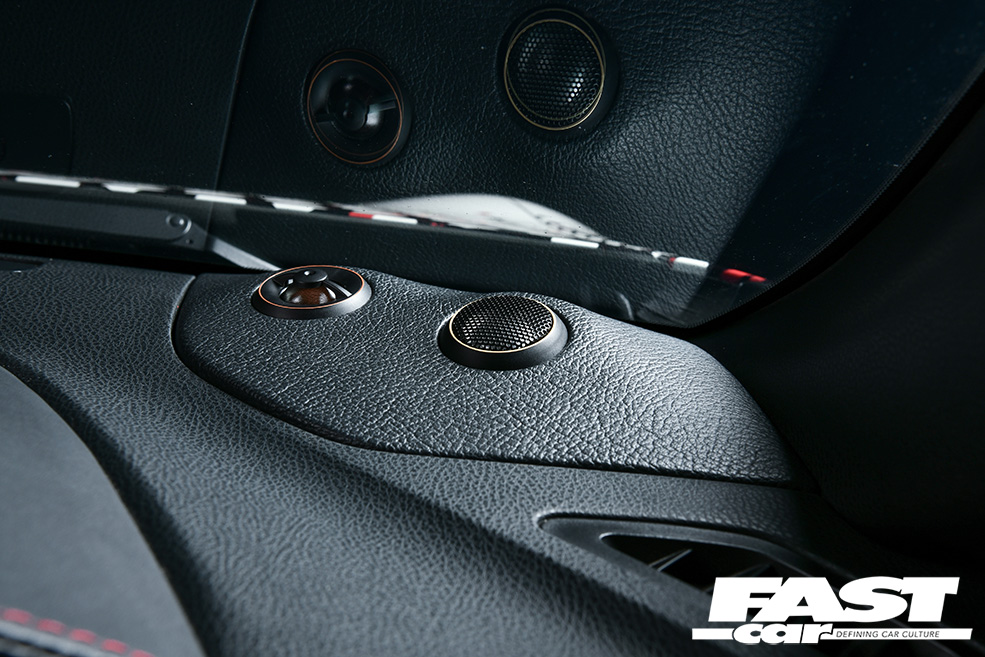
Tweeters
A tweeter is the smallest speaker driver and is used to make the high frequencies. Those start with upper piano and guitar notes and go up to the top end frequency limit of human hearing. In numbers, tweeters usually begin their job anywhere from 3,500Hz to 5,000Hz or 3.5kHz to 5kHz. Hertz is just ‘cycles per second’ which is also the term for frequency.
They come in a few types. The cheap and nasty one is the Piezo-electric. Using a little membrane, these are found on entry-level speakers only. Little round silvery discs just a few millimeters across and literally nothing deep. It’s just an electrical sandwich. No magnet and in my experience, they all sound poor.
The highest fidelity of all, ironically, uses a similar technology but infinitely more refined. That is electro-magnetic induction ribbons, or EMIT tweeters. So-called because they all look like little vertical ribbon heater elements, they sound incredible. Fast, detailed and can make the hairs lift on your arms. You want breathy and tinkly? To hear the edges of strings and that rasp of her close-miked vocal, mouth sounds and all? That’s a ribbon.
The most common are dome tweeters, though. They again vary from cheap mylar domed, via fancier metal domed, to coated soft silk domes, which sound the best. Usually from 15mm to 25mm or a little wider. The maddest dome tweeters from Focal, came with a test certificate in a little wooden box.
And then, the worrying trend for crazy loud pro-audio stuff in cars. Like bullet tweeters, stubby tweeter horns and HF compression drivers. These are all for live concerts and in Brazil they make and sell them worldwide for car and truck systems called, Carrettas. It’s crazy and pure hearing damage if you are not careful.
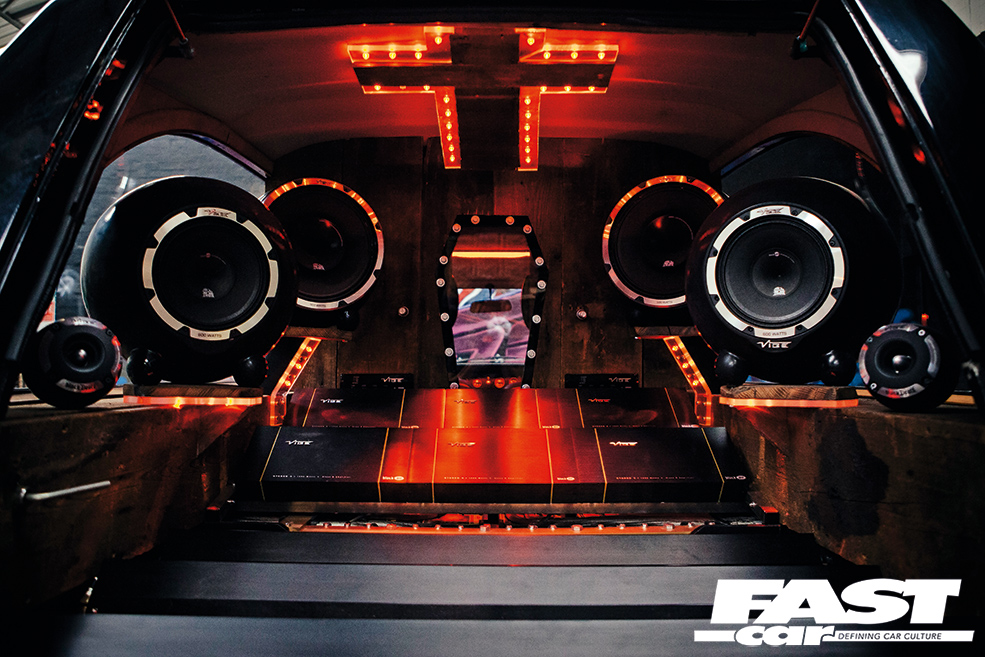
Midband car speakers
Here is the thing about the crucial midband speaker. A tweeter may be mounted centrally within it, or else nearby, yet it’s the one that holds it all together, the midband, is what our ears are most sensitive to. It is the speaker driver that will play the largest portion of the vocals, so it matters like hell. It’s also the one with the engineering that will determine the price point of the whole set. With every maker, we find that the best value for money tends to be in their just-above entry-level.
When buying coaxials or components, the tweeter grade and type it comes with may not vary much. Yet as you go up each range or to a pricier brand, that midrange technology gets more advanced.
In general, the bigger and more badass the butt, the better the speaker. That said, a Neodymium magnet means motor assemblies a fraction the size than normal, with bigger power. Look for ‘NEO’ models if you need more muscle from a small speaker housing.
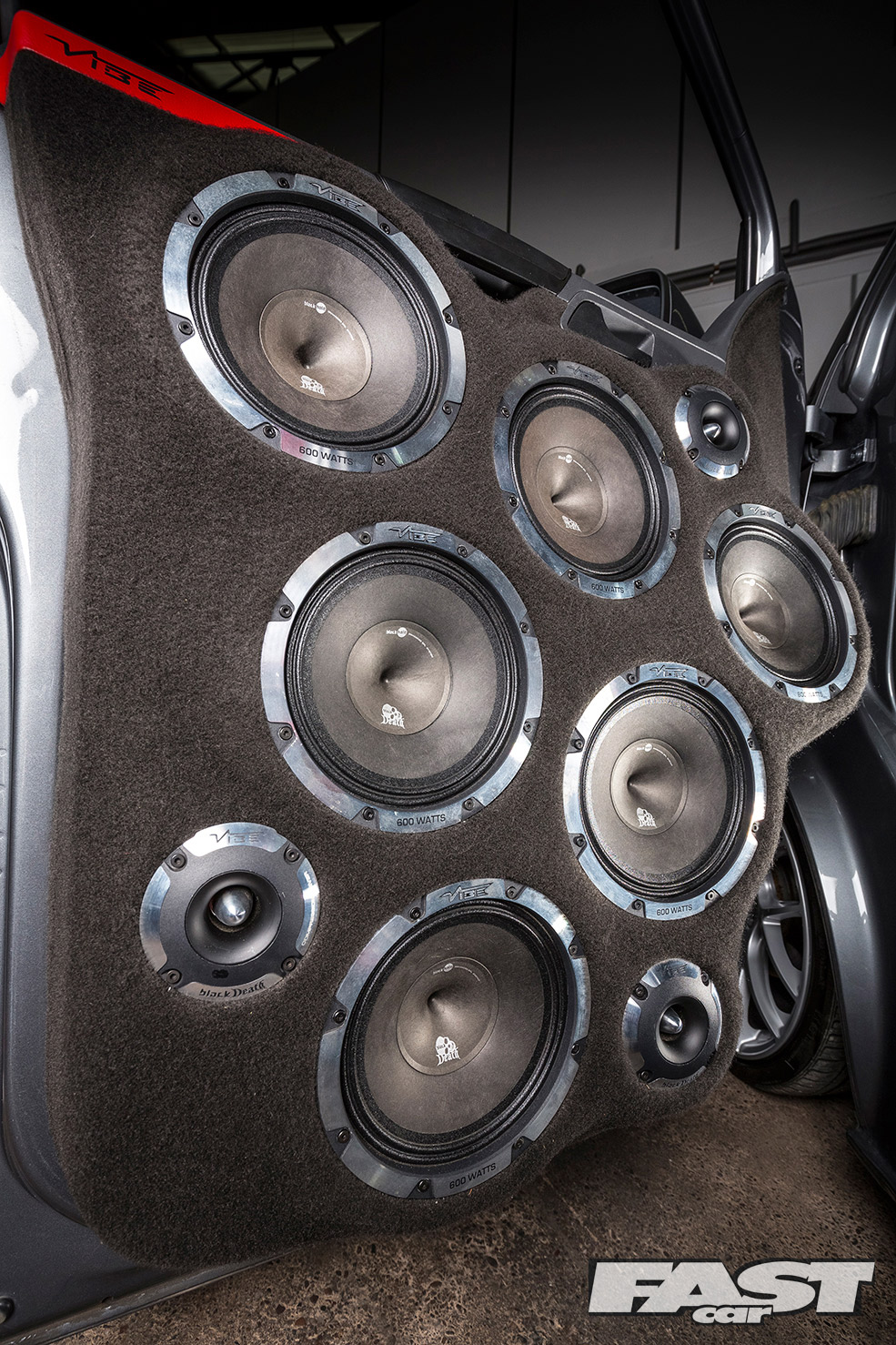
Oval car speakers
This shape of speaker has a very long history. For decades, every TV set and home radio that needed to show off how loud it went, used ovals. That’s because you get a bit of extra cone area for any given motor assembly to shove about. That’s the bit behind, the round magnet with a coil of wire hung in it that makes the cone move.
That oval shaped speaker cone is deliciously inherently rigid as hell, making it brilliant for making tight bass. A bass driver needs to push a lot of air around fast. It needs to change direction really quickly, too and not bend nor flex under load. It also wants to weigh as little as possible. This is an engineering conundrum that has been fought for ever in loudspeaker technology and design. ‘Newer’ cone materials like carbon fiber and Kevlar, excite bass speaker cone designers.
In car speakers, this extra-bass-for-nothing effect peaks in a mighty unit. Standard in many American cars but very few European, the 6×9 inch oval. There are a few sizes of ovals used in factory locations but most are OEM-only. Just a few sizes like 4×6 inch, are available as aftermarket upgrades. The 6×9 is found mostly with mids and tweeters hung above it, coaxially, as a full-range speaker. That said, just a few suppliers make 6x9s as separate components, with a mid and tweeter to go with each one.
Ovals, and 6x9s have a bad rep amongst the pompous. They can dominate a sound system and make the most music from the back, including that tight bass everybody loves. The ‘hifi’ folks say it should be from in front, like at a concert. After many decades of thought on this, my last thought on that is “Nah, I like it.”
Be sure to check out our other car audio guides:

